Four sweet Greek recipes to mark Orthodox Easter
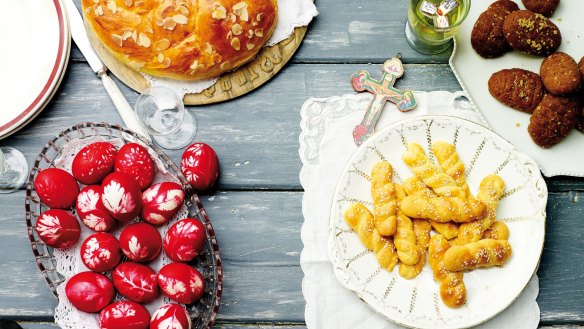
I love Easter. There is something comforting about this important week in the Greek Orthodox calendar. It is a time for reflecting and appreciating all that is important in our lives: family, tradition and the joy of feasting.
In Greece, Easter takes place in spring and so many of the customs and traditions are tied to its arrival. The Easter egg, for instance, represents new life and new beginnings.
When I think of Easter growing up, I remember the aromatic frankincense that people burn in the lead-up to Easter. It produced a woody, sweet smoke that would make me feel safe, secure and protected whenever my mother lit it, so I continue that tradition in my family home today.
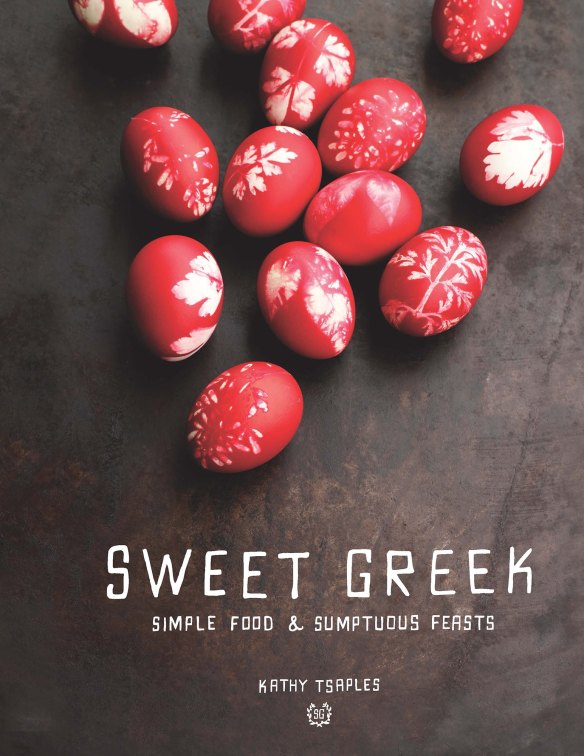
Apart from the religious significance of Easter, there are also the preparations that all households embark on. During Holy Week, we spend every day baking special Easter treats. It's not only the baking that's important, but also the planning involved. It's about allocating a baking project for each day and buying the ingredients, such as flour, sugar, vanilla, masticha (the fragrant resin of the evergreen mastic tree), mahlepi (powdered cherry kernel), orange, butter and cinnamon.
All households bake koulouria, a sweet Easter biscuit, and tsoureki, a fragrant plaited Easter bread. On Easter Thursday we dye eggs red, and on the Saturday we visit friends to exchange baking and gifts.
Finally, Easter Sunday is when we fill the table with traditional Greek Easter foods. At dawn, the spits are fired up as whole-roasted lamb or goat are prepared. Appetisers such as tzatziki, olives, red eggs and grilled octopus are served to guests while the lamb cooks. There are, of course, lemon potatoes, spanakopita, salads, wine and ouzo to accompany the meat, and the preparations turn into a festive celebration lasting all day.
Koulourakia
This makes a big batch of traditional Greek Easter biscuits, which are exchanged as a gift on Easter Saturday. If you prefer, you could make half a batch and still have some to give away.
INGREDIENTS
- 250g good-quality unsalted butter
- 450g (2 cups) caster sugar
- 6 eggs (1 for glazing)
- 250ml (1 cup) milk
- 250ml (1 cup) orange juice
- rind of 1 orange
- rind of 1 lemon
- 25g vanilla sugar*
- 800g-1kg (7-9 cups) self-raising flour
- 1 tsp baking powder
- 1 tbsp milk (for glazing)
- sesame seeds, optional
METHOD
- Preheat the oven to 160C fan-forced (180C conventional).
- Cream the butter and caster sugar until light and fluffy. Add 5 eggs, one at a time.
- Add the milk, orange juice, citrus rind and vanilla sugar. The mixture may curdle at this stage, but adding the flour will rectify this.
- Sift together the flour and baking powder and add to the mixture, combining to form a soft, pliable dough. Start with 7 cups of flour and add more little by little if needed. Let it rest while you tidy up.
- Shape pieces of dough into little logs, then twist or plait them together.
- Beat the remaining egg with 1 tablespoon of milk and brush on the biscuits to glaze. Sprinkle with sesame seeds.
- Bake for about 20-25 minutes until it golden brown on top, then allow to cool.
Makes: about 60, depending on size
Note: If you don't make your own vanilla sugar, look for the Hoyts brand in supermarkets or use vanilla extract.
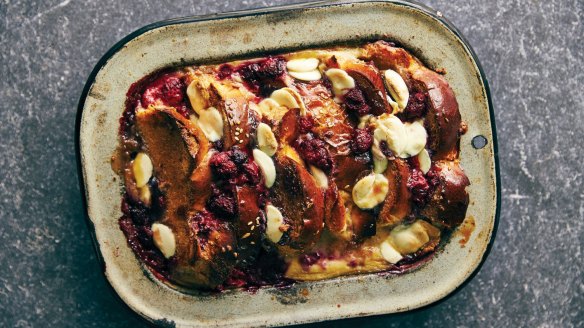
Bread and butter pudding with tsoureki, white chocolate and raspberries
This fusion of traditional English and Greek cooking began as a way to use up an abundance of tsoureki, but I've made it irresistible by adding a combination of custard, raspberries and white chocolate.
INGREDIENTS
- 250g tsoureki bread*, thickly sliced
- 75g butter, softened
- 320g (1 cup) raspberry jam
- 250g frozen or fresh raspberries
- 200g white chocolate, chopped into pieces about the size of a 5¢ coin
- 5 eggs
- 450ml pouring cream
- 250ml milk
- 125g caster sugar
- 1 tsp vanilla extract
- 1⁄4 tsp salt
- 1 tbsp sugar, cream, ice-cream to serve
METHOD
- Preheat the oven to 160C fan-forced (180C conventional).
- Lay the tsoureki on a baking sheet and toast both sides in the oven. Allow to cool, then generously spread with the butter and raspberry jam.
- Arrange half of the tsoureki in a single layer in a 20 × 25cm ovenproof dish. Scatter with half of the raspberries and half of the white chocolate pieces. Top with the remaining tsoureki and scatter with the remaining raspberries and white chocolate.
- To make the custard, whisk together the eggs, cream, milk, caster sugar, vanilla and salt. Pour over the tsoureki, pressing the bread down to make sure it is well-covered. Cover with cling wrap and refrigerate overnight so the custard soaks into the bread.
- The next day, preheat the oven to 160C fan-forced (180C conventional).
- Sprinkle the sugar over the top of the pudding and bake for 1 hour or until crisp and golden on top. Remove from the oven and serve warm with cream or ice-cream, or both.
Serves: 4-6
* Note: Tsoureki bread is available from Greek bakeries and delis.
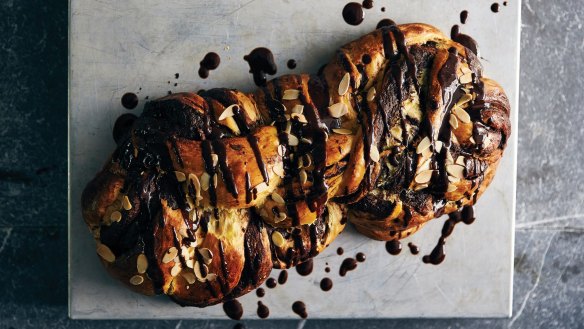
Tsoureki with chocolate
Baking this updated version of the traditional Easter bread perfumes the house with the aromas of masticha, mahlepi and orange zest. It makes one large loaf or two medium loaves.
INGREDIENTS
Dough
- 250ml (1 cup) warm milk
- 115g (1⁄2 cup) caster sugar
- 7g sachet dried yeast
- 2 eggs, lightly beaten
- 80g (⅓ cup) butter, melted
- 3g masticha Chios*, ground with 1 tsp sugar in a mortar and pestle
- 3g mahlepi*
- 1⁄2 tsp salt
- 1 tsp vanilla extract
- zest of 1 orange
- 480g (4 cups) strong white flour
- 1 egg, beaten, to glaze
- 1⁄2 cup flaked almonds
- 100g chocolate (60 per cent cocoa), melted, to serve
Chocolate ganache
- 50g (1⁄2 cup) cocoa
- 75g (3⁄4 cup) icing sugar
- 1⁄2 tsp cinnamon
- 1⁄2 tsp instant coffee powder
- 125g unsalted butter, softened
- 125g chocolate (60 per cent cocoa), melted
METHOD
- To make the dough, use an electric stand mixer with the dough hook attachment and slowly mix the milk, sugar and yeast together. Add the eggs, butter, masticha, mahlepi, salt, vanilla and orange zest. Mix until incorporated, then add the flour, one cup at a time. Continue mixing to form a soft, pliable dough, about 8 minutes in the machine. Cover the bowl and allow the dough to rest for 30-40 minutes, or until doubled in size.
- To make the ganache, mix the dry ingredients together in a bowl, gradually adding the softened butter and chocolate to form a smooth paste. Set aside, but don't chill as you need to be able to spread over the dough.
- Once the tsoureki has risen, divide the dough into 2 equal portions. It will be really sticky, but it's important not to add extra flour. Rub the workbench, a rolling pin and your hands with a little olive oil.
- Roll each portion of dough out into a square roughly 30 × 30cm. Spread each square generously with half the ganache and roll into a sausage. Use an oiled pastry scraper to help lift the dough off the oiled bench while rolling.
- Once both portions of dough have been rolled up, lay each roll side by side, with the seam on the bottom. Place the top ends on top of each other and gently squeeze together.
- Using a sharp knife, start about 4 centimetres from the top of each roll and cut right through the dough, down the centre, to the bottom. This will expose the layers of dough and chocolate. Braid the 4 strands to form a twisted chocolate and dough loaf. Place this log onto a baking tray lined with baking paper.
- Allow the loaf to rest for a second time, about 30-40 minutes.
- Preheat oven to 160C fan-forced (180C conventional). Brush the top of the tsoureki with the beaten egg, and sprinkle with flaked almonds. Bake for 25-30 minutes, or until golden brown and well risen. Once cooked through, allow the bread to cool. Use a fork or spoon to drizzle the melted chocolate over the bread.
Makes: 1 loaf
* Note: Masticha Chios, or mastic, is an aromatic resin, traditionally produced on the island Chios, available in crystal form. Mahlepi is made from the kernels of a type of sour cherry. Both are available at Greek delis and specialist grocers.
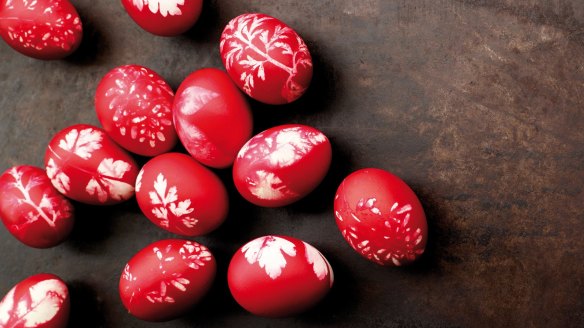
Red-dyed Easter eggs
Start working on these the night before you intend to serve them (traditionally Easter Thursday). You will need a wide cooking pot, clean stockings, a cloth and string.
INGREDIENTS
- 2 dozen small to medium white eggs
- 2 packets Greek red egg dye*
- 2 cups vinegar
- 1 cup sunflower oil
- water
- a variety of herbs (any pretty leaf you'd like to see on your eggs, such as parsley, dill, even leaves from flowers)
METHOD
- Have your eggs at room temperature. Wash and dry them thoroughly. Check for any cracks and get rid of eggs that are damaged.
- Prepare your leaves. Using a wet sponge, moisten the leaves and attach them to the eggs. Get a length of stocking, cover the egg with it and, using some string, tie a knot at both ends. It will look like a bon-bon.
- The next day, prepare the dye in a wide cooking pot according to the packet's instructions, adding the vinegar to intensify the colour.
- Carefully add the egg to the dye mixture and bring to the boil as for hard-boiled eggs. They will need to simmer for a little longer than a normal hard-boiled egg (about 10 minutes).
- Remove the pot from the heat and let the eggs stand in the dye for several more minutes before taking them out.
- Remove the stockings and using a cloth dampened with oil, wipe and polish the eggs. The oil helps to remove the leaves and makes your eggs shine. Display them in a beautiful platter.
Makes: 2 dozen
* Note: Red egg dye is available from Greek delis, grocers, bakeries and some supermarkets.
This is an extract from Kathy Tsaples' two books, Sweet Greek: Simple Food, Sumptuous Feasts and Sweet Greek Life, My Shared Table, published by Melbourne Books.